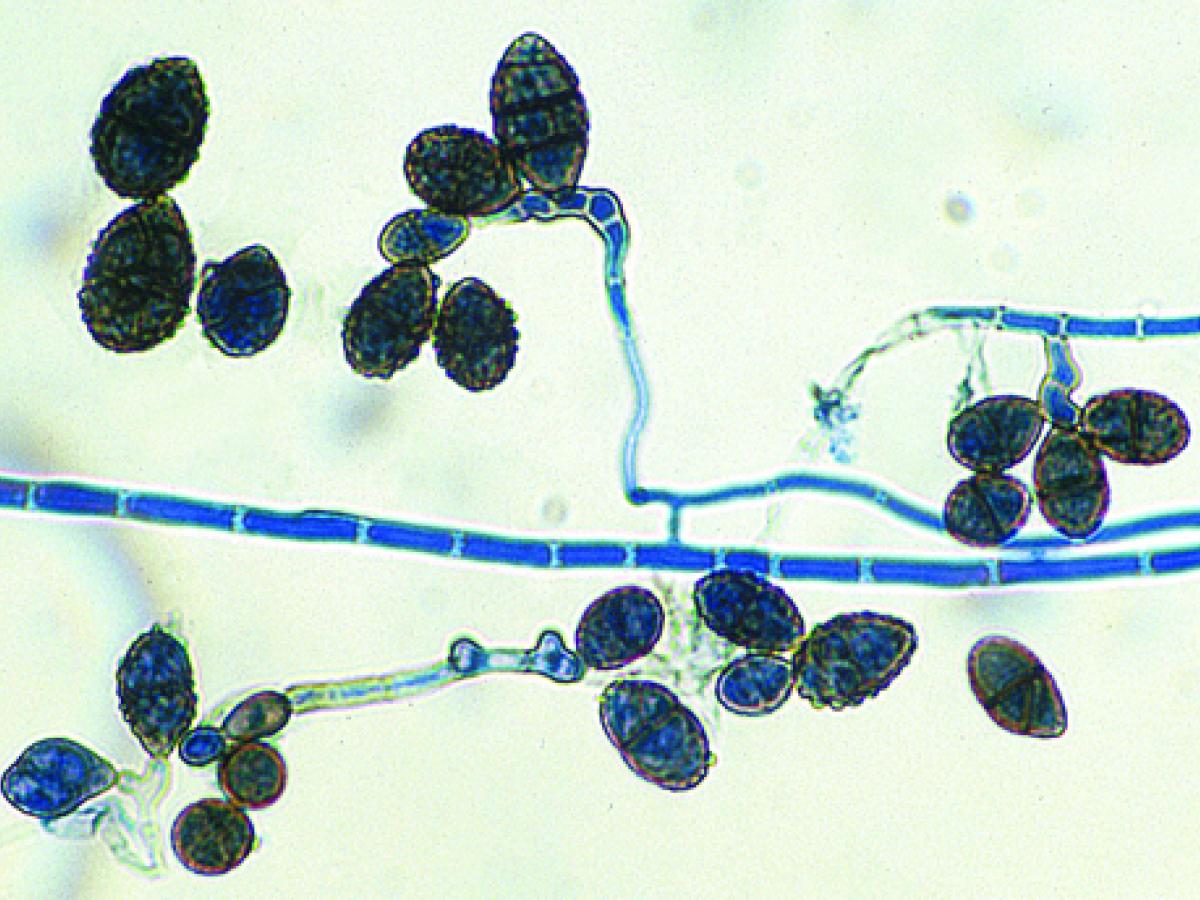Ulocladium
Species of Ulocladium should not be confused with other poroconidial genera such as Stemphylium, Alternaria, Bipolaris, Exserohilum, Dreschlera and Curvularia.
A human case of keratitis has been reported (Badenoch et al. 2006).
RG-1 organism.

Conidia of Ulocladium spp.
Morphological description:
Colonies are rapid growing, brown to olivaceous-black or greyish and suede-like to floccose. Microscopically, numerous, usually solitary, multicelled conidia (dictyoconidia) are formed through a pore (poroconidia) by a sympodially elongating geniculate conidiophore. Conidia are typically obovoid (narrowest at the base), dark brown and often rough-walled. Seven species have been described, all being saprophytes.
Molecular identification:
ITS sequencing is sufficient for genus identification (Badenoch et al. 2006) and Woudenberg et al. 2013).
References:
Ellis (1970, 1976), Domsch et al. (1980), Rippon (1988), Samson et al. (1995), de Hoog et al. (2000).
| No | ≤0.016 | 0.03 | 0.06 | 0.125 | 0.25 | 0.5 | 1 | 2 | 4 | ≥8 | |
|---|---|---|---|---|---|---|---|---|---|---|---|
| AmB | 2 | 1 | 1 | ||||||||
| VORI | 2 | 1 | 1 | ||||||||
| POSA | 1 | 1 | |||||||||
| ITRA | 2 | 1 | 1 |
